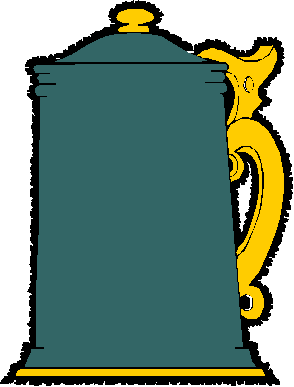

Neuzeller Kloster-Brau Black Abbot





Review Date 10/17/2001 By John Staradumsky
Believe it or not, beer has not always been the beverage
we have come to know and love today. Centuries ago, from before the dark
ages through the middle ages and beyond, the art of brewing was not as
well-known a science as it is today, and the ale you bought at the local
brewery would not always taste the same as the flagon you got during your
last visit. There were many reasons for this. The grain from which the brew
was made would vary in its quality, as would other ingredients. Fermentation
times and temperatures would also not be consistent, again affecting the
final product.
Beer was looked on much differently than it is today in those days. With
water quality suspect of infection by microorganisms, low strength beer was
a welcome alternative to slake oneís thirst on a hot day. The boiling
process in the brew kettle would kill off any infection and sterilize the
beverage, and the alcohol present (and hops when they were used as a
seasoning) helped ward off re-contamination.
Additionally, beer was a foodstuff in times past. At times when every
calorie counted, a glass of rich malty ale might add 300 to 400 of them
depending on the size of the serving. Malts during the times of the middle
ages were certainly far less converted, meaning that the mash process was
far less precise and did not convert out as many starches from the grain to
fermentable sugars. That meant that those starches went unfermented and were
digested by the human drinker rather than the yeast fermenting the brew.
Then too, not all of the sugars ended up being fermented, which again left
them for the 11th or 12th century equivalent of Norm and Cliff to enjoy.
Meanwhile, back at the monastery, those clever monks found a tasty way to
get through those annoying Lenten fasts: they drank beer. While Martin
Luther may have enjoyed his Diet of Worms (thatís a pun, people), the smart
monks were enjoying cold flagons of monastic ale. You see, solid food was a
no-no during a fast, but liquids werenít. So those wily monks chugged down
on their dayís version of Red Bull Energy Drink and all was well.
Neuzeller Kloster Brauís Black Abbot is a beer any monk would love during a
fast. Brewed on the original site of the monastery where brewing has
occurred since 1268 and has been done commercially since 1589, this is a
beer the brewery describes as a Schwarzbier brewed according to an old
monastery recipe. Black Abbot is not as smooth as any beer Iíve tasted in
that style however. It has a low alcohol content of 3.9% by volume, and has
lots of nourishing sugars left in for your beer drinking pleasure. I have
also tasted an interesting Bath Beer from this brewery, which I have
reviewed separately.
Black Abbot Lager pours to a jet-black color with a huge creamy tan head
formation and a smoky fresh malt nose. The palate is very sweet upfront,
perhaps the sweetest beer Iíve ever tasted. It has an absolutely wonderful
fresh malt flavor and is full-bodied, lightly roasty, smooth and silky with
a smooth oat character. Tastes like fresh sweet wort; upon sipping I
immediately suspected a lowly attenuated beer. There is a delightful hint of
chocolate and malted milk flavor. Sustaining and refreshing, this is like
chewing on fresh roasted malt. A slight roasty bitterness is perceptible in
the somewhat nutty finish.
I really wouldnít pair this with any particular food myself. Rather, I
recommend doing like the monks did and enjoying it as a meal in a glass.
Glad I tried it?
T
Would I rebuy it??
*Pricing data accurate at time of review or latest update. For reference only, based on actual price paid by reviewer.
(B)=Bottled, Canned
(D)=Draft